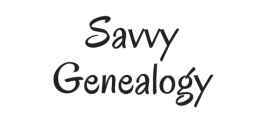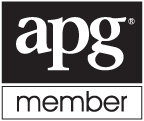What about Swedish Church Records?
Hello everyone! Welcome to another week of genealogy! I figured we had enough of Swedish household examinations and moving in and out records for a lifetime. However, if you need a refresher on these records, then click here, here, and here. So let’s change gears a little and talk about Swedish church records and how they connect with the previously mentioned records.

Once you’ve found your ancestor in the household examinations, you can go over to the church records to verify the information. Household examinations are copied from church records, word of mouth, and other records so they can be wrong. You always want to have more than one record stating the same birth event or marriage or moving date to make sure the event is correct. Generally speaking, the Swedes did a fairly good job at keeping up on the records. So in my experience, they didn’t mess up too often. But it’s always good practice to check your sources with other genealogical records. ALWAYS!
Swedish Church Records-Birth Records
Swedish birth records give you a lot of information about the family. It also gives you, usually, a page number to find the family in the household examination books. So you can continue your search through their lives even through church records. The Swedish word for birth record is “Fodelsebok” and christening record is “Dopbok.” Here’s an example of a birth record.

Now you may not be able to see it clearly, but usually birth records include christening information as well. So if you see two dates, then it will be a birth date and a christening date. In this image, the dates are separated. The birth date is located in column 2 and the christening date is located in the far right page.
This birth record is from 1921 in Roke Parish, Sweden. It includes the child’s full name, the gender, parents names and residence, parent’s birth information, the household examination page number, the priest’s name who either performed the ceremony or recorded the info in the record, and the witnesses’ names.
Again, if you found your Swedish ancestor first in the church records, you can then take that page number and find them in the same parish and same year in the household examination records. Then you can follow your ancestor from there. Neat, huh? I love these records!
Swedish Church Records-Marriage Records
Swedish marriage records are very similar to birth records in the information that they share. Again, just like birth records, marriage records show both the engagement dates and the marriage date. Therefore, if you see both dates on the record, then you know why. For example…

The Swedish word for engagement record is “Lysningsbok” and for a marriage record it’s “Vigselbok.” So in this record column 2 shows three dates, which means the couple announced their engagement three times before they got married. This was the custom to give anyone a chance to say no to the marriage.
Then the groom is listed first with his residence and birth information, then the bride is listed with her information. The next column is the household examination book and page number for this new couple. All you have to do is go to the same parish and find that book and page number and you see the couple. Next is the priest information, then the marriage date is on the far right. Don’t record the wrong date when putting the information into your records.
Swedish Church Records-Death Records
Again, these records follow the same format as birth and marriage records. They list two separate dates. One for death and one for burial so don’t record the wrong date in your records. The Swedish word for death record is “Dodbok” and for burial record is “Begrafningsbok.” Here’s an example.

You will see the death information first such as the death date, the person who died with their information, and the household examination page number. Then you see the burial date and priest information. So you will be able to find your ancestor quickly once you get the hang of reading these record formats. You don’t need to worry about the Swedish language. Just use this word list here and this general page header template to get you started. In time, you will figure out what the columns mean.
Summary
Those are church records in a nutshell! Do you see how they work together with household examination records? It’s so fascinating how these records intertwine with each other! They make a genealogist’s job much easier once you know how they work. Again, I’m always here if you have questions about how to find any Swedish records. So good luck with your journey and remember it only takes one step at a time to get to your goal.
Good luck and happy hunting!
Tiffany
birth records, death records, household examination records, marriage records, swedish church records

